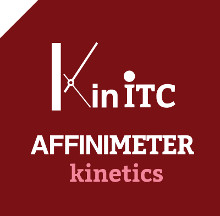On November 24th and 25th will be attending the European MicroCal Users’ Meeting 2015 organized by Malvern Instruments.
Our sales representant Dr. Juan Sabín will be there sharing ideas on new applications and challenges on Isothermal Titration Calorimetry (ITC) experiments and data analysis. We will be pleased to talkt to you. Contact us.
We are sharing the Workshop agenda publised in the Malvern website where you will find all information of the Workshop and registration.
| Free Morning Workshop | |
| 8:30 | Registration and coffee |
| 9:00 | “Recent developments in interaction analysis: introducing the new MicroCal PEAQ-ITC” Dr. Marco Marenchino, Applications Specialist, Malvern Instruments |
| 10:30 | Coffee break |
| 11:00 | “Keep your DSC at top performance: experiment design and advanced data analysis” Dr. Marco Marenchino, Applications Specialist, Malvern Instruments |
| 12:00 | Lunch |
| Meeting Opens | |
| 13:00 | “Opening remarks” Dr. Mark Wingfield, General Manager GmbH, Malvern Instruments |
| Plenary Lecture | |
| 13:10 | “Profiling Enthalpy/Entropy to Aid Decision-Making in Drug Optimization: Fact or Fantasy?” Prof. Gerhard Klebe, University of Marburg |
| Calorimetry for the studies of protein-ligand interactions in academia and DD industry | |
| 13:50 | Microcalorimetry with small molecule compounds at Merck-Serono Dr. Ansgar Wegener, Merck |
| 14:20 | “Affinity and mechanostability in protein-protein interactions” Lukas Milles M.Sc. and Magnus Bauer M.Sc. LMU |
| 14:50 | Coffee break |
| 15:10 | “Thermodynamic landscape of the bacterial 30S translation initiation complex assembly” Dr. Eric Ennifar, Research Director at CNRS, University of Strasbourg |
| 15:40 | The metal-dependent network for nickel delivery into urease: protein interactions and conformational changes Dr Barbara Zambelli, University of Bologna |
| 16:10 | Drug-target interactions put under the microscope Mrs Barbara Wienen, University of Marburg |
| 16:40 | ‘How to be PIQy’ Dr. Chris Johnson, MRC Laboratory of Molecular Biology, Cambridge |
| 19:00 | Calorimetric Dinner |
November 25th
| Protein and antibody characterization | |
| 08:30 | “Current Applications of ITC in antibody design and development” Christian Gassner, Roche Diagnostics |
| 09:00 | “Lessons learned from pH and excipient screening for mAb formulation development by using DSC” Dr. Tim Menzen, Coriolis Pharma |
| 09:30 | “Accelerating biotherapeutic development” Dr. Marco Marenchino, Application Specialist, Malvern Instruments |
| 10:00 | “DSC in formulation development of insulins” Dr. Ursula Stock, Sanofi-Aventis |
| 10:30 | Coffee break |
| Data Analysis | |
| 11:00 | “Complex binding models and Global Fit” Dr. Natalia Markova, Principal Scientist – MicroCal, Malvern Instruments |
| 11:30 | “High precision ITC with automated peak-shape analysis” Prof. Dr. Sandro Keller, Molecular Biophysics, University of Kaiserslautern,Germany |
| 12:00 | Lunch |
| Novel Applications I | |
| 13:00 | “Microcalorimetric studies of lipid and detergent systems” Prof. Dr. Heiko Heerklotz, Professor for Pharmaceutics, University of Freiburg |
| 13:30 | “Enzymatic conversion of biomass: A calorimetric approach” Prof. Dr. Peter Westh, Professor of Biophysical Chemistry, Roskilde University |
| 14:00 | “Nanotools to understand when a protein can induce an immune response” Dr. Mihaela Delcea, Group Leader Nanostructure, University of Greifswald |
| 14:30 | Coffee break |
| Novel Application II | |
| 15:20 | Calorimetric studies of supramolecular peptide assembly and protein aggregation Prof Büll, University of Düsseldorf |
| 15:50 | “KinITC: Get more out of ITC data” Dr. Eric Ennifar, Research Director at CNRS, University of Strasbourg |
| 16:20 | “Concluding remarks” Dr. Mark Wingfield, General Manager GmbH, Malvern Instruments |






